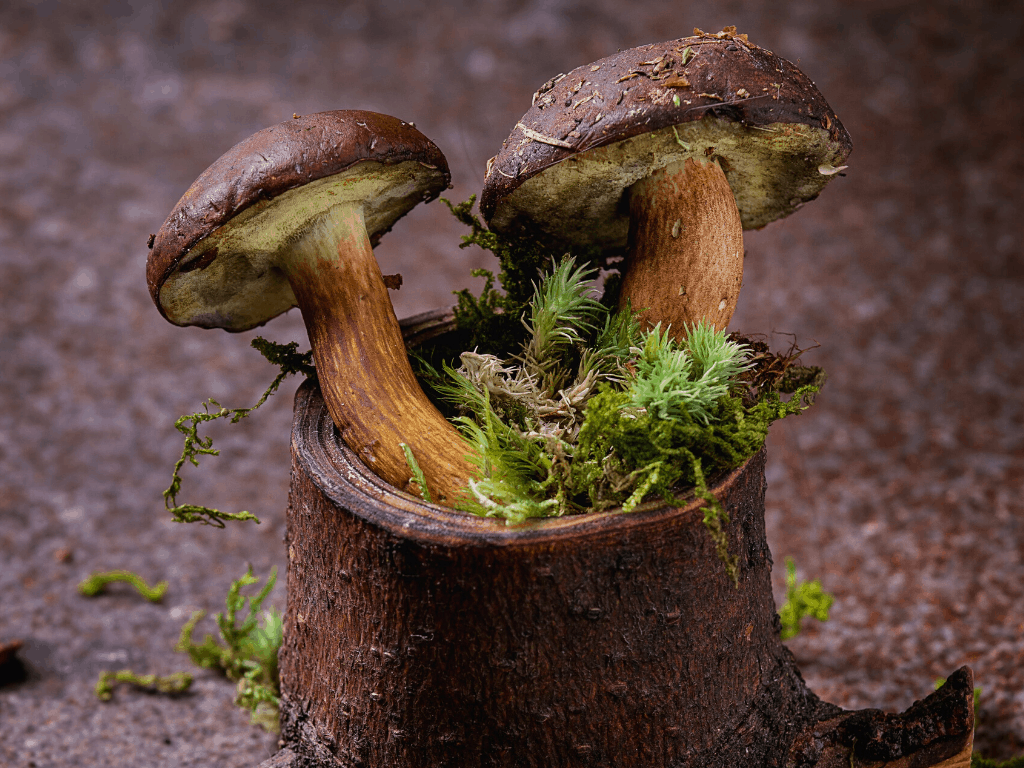Mushrooms are delicious and have excellent medicinal properties. They’re also fun to find in the wild but it takes a little experience and skill to become a mushroom hunter.
If you’re interested in learning how to forage for your own mushrooms, and get a break from the usual grocery store variety, be prepared for an enjoyable challenge with a delicious reward.
It takes time to spot a morel against the backdrop of the forest floor, so patience and persistence are key. Here are 3 keys to foraging for mushrooms and get you on the right track to finding your own supper.
Like This Article? Pin it on Pinterest

1. Important Characteristics Of A Mushroom Hunter
The first step is for you to have the knowledge necessary to find mushrooms. That means having a working knowledge of the environment in which the mushrooms are growing. For instance, if you’re hunting morels, they grow on or near dead trees in the spring, typically in colder regions.
When you know you’re in the right place at the right time, it’s easier to have the important characteristics of a mushroom hunter patience and persistence.
Even more importantly, there are many species of poisonous mushrooms, so you must know what you’re looking for before foraging. You need to make sure that what you think is a morel truly is a morel.
There are often easy ways to tell poisonous and edible mushrooms apart. Using the example of morels, they are hollow inside when you cut them open. False morels are not. Another example is chanterelles, which do not grow in clusters, but the poisonous Jack O’Lantern mushrooms do grow in clusters.
The more knowledge you have about the characteristics of both edible and poisonous mushrooms in the area where you’re foraging, the easier it will be to tell them apart.
2. Learn About Poisonous Mushrooms
There are thousands of species of poisonous mushrooms, but don’t let that deter you from foraging. It’s best to stick to the mushrooms you know are safe. Most poisonous mushrooms have an unpleasant, bitter taste. If you eat something you think is poisonous, immediately spit it out, flush your mouth out with water, and contact poison control in your area.
Unfortunately, not all poisonous mushrooms have a bad taste. In fact, some are actually quite tasty. That’s why it’s so important to be sure about what you’re eating prior to ingesting it. Check out our Common Poisonous Mushroom Guide to learn more.
Here are two of the more common poisonous mushrooms found in the wild:
• Death Caps – Quite common and extremely deadly. Just a half cap is all it takes to cause irreparable damage to the liver. These mushrooms grow just about anywhere, from big cities to the middle of the woods. Death Caps have a thin white stalk and a round, silver cap.
• Destroying Angels – These mushrooms are even more deadly than Death Caps, causing potentially lethal damage to the liver and kidneys just five hours after ingestion. Destroying Angels have a solid white cap with gills, and a narrow white stem.
3. Know Your Edible Mushrooms
Fortunately, there are also many species of edible mushrooms found in the wild. Some of the more sought-after species of edible mushrooms are White Buttons, Creminis, Morels, Truffles, and Portabellas.
White Buttons, Creminis, and Portabellas are actually the same species of mushroom, just at different stages in the maturation process. So if you find White Buttons when you were looking for Portabellas, just let them age a bit. Truffles are difficult to find and a delight when you do.
Final Thoughts
Foraging for mushrooms is a challenging and fun way to find these tasty and healthy treats. Be sure to do your research before foraging, or bring a good field guide along with you. Knowing what you’re looking for will make your experience easier and safer.
Check out some products on Amazon we recommend that may help in your foraging adventures.
National Audubon Society Field Guide to North American Mushrooms is a very good guide for any mushroom hunting enthusiast that contains 700 photographs that describe each species and is accompanied by a detailed physical description, information on edibility, season, habitat, range, look-alikes, alternative names, and facts on edible and poisonous species, uses, and folklore.
Another comprehensive guide book is The Complete Mushroom Hunter, Revised: Illustrated Guide to Foraging, Harvesting, and Enjoying Wild Mushrooms. It is an excellent guide for beginners and has information that even experienced mushroom hunters would find valuable including a full chapter on medicinal mushrooms and their accompanying health benefits. It has a vast amount of information and may be too big to carry with you in the field so it’s better to prepare before you venture off.
Mushroom Foraging Knife by Opinel. The ideal tool for picking morels, ceps, chanterelles, trumpets, rosés meadows, coulemelles, boletes … etc. The 8cm (3 inches) blade is curved to facilitate cutting. The natural bristle brush behind the beech handle is ideal for dusting the picking and removing the soil easily. It has a comfortable ergonomic feel and the stainless steel blade prevents rust allowing for a tool that will last you a long time.






